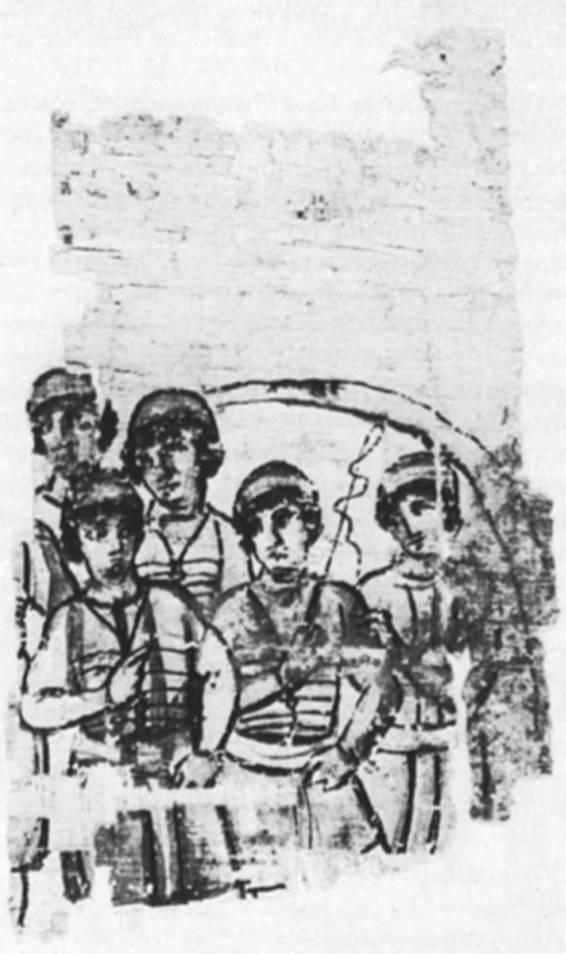Miniature of charioteers. Egypt (?), about 500. Papyrus
This fragmentary painting shows a group of charioteers in some unidentified context. The colors of their knee-length tunics and contrasting shirts indicate membership in one of the four factions of the hippodrome: blues, greens, reds, and whites. They wear greenish helmets with a yellow band, yellow belts, and narrow strips wound around the chest for protection against racecourse accidents. The figure to the right does not wear strips and may be an attendant; a sixth driver is partially visible at the left edge. A yellow arch suggests an arcade of the hippodrome architecture.

Four factions were still racing in the sixth century. Thought to be the popular standard- bearers for different social classes, political allegiances, or religious beliefs, these teams seem rather to have been the rallying points around which civic unrest would gather and periodically break into mob demonstrations (Cameron, 1973, pp. 232-239).
Recently, Turner (1973) pointed out that this is a fragment from a codex—not a roll as had been maintained by previous scholars—after he discovered on the verso the beginnings of about thirteen lines of writing by the same hand as the writing on the recto.
Among surviving Late Antique illustrated papyri this one ranks very high in quality. Despite the heavy outlines in black, the group conveys a sense of spirited animation through the abrupt alternation of colors and the sharply focused glances; while the figures are essentially flat, they show some degree of modeling.
The text has not been identified, arid the subject of the illustration, therefore, is still unknown, as are the original size of the page and the extent of the illustration.
This fragment is proof of the existence and high quality of Late Antique illustrated papyrus codices. Gasiorowski (1931, p. 1) pointed out that the letter forms indicated a date of about 500 for this fragment, but preferred, nonetheless, to place its production in the first half of the fifth century (Gasiorowski, 1931, p. 9), as most scholars after him have done. Turner (1973), after a scrupulous analysis of the letter forms, proposes a date between 450-500, and reaffirms, as most likely, Gasiorowski's first suggestion, a date about 500. Turner would tentatively place its production in Egypt.
Found in Аntinоё in a rubbish mound in 1914, whose contents, still unpublished, were dated by the excavator and former owner of the piece, John Johnson, from the late fourth to the sixth century. Bibliography: Gasiorowski, 1931; Turner, 1973; Weitzmann, 1977, pi. 6.
Date added: 2025-07-10; views: 159;
